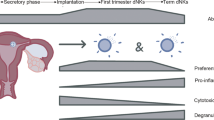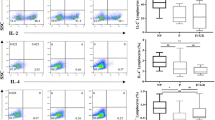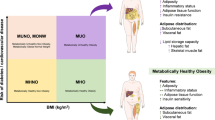Abstract
Objectives:
To investigate the effect of obesity in early–mid pregnancy on crucial pregnancy hormones and the uterine immune environment.
Background:
Obesity impacts reproductive ability, adversely affecting conception and leading to complications in pregnancy. Obesity is often regarded as a stress state and an immune disease, both of which may contribute to pregnancy failure. We previously demonstrated that stress in early pregnancy greatly alters progesterone secretion. As progesterone is an immunomodulator, altered progesterone secretion may adversely modify the maternal immune system. In the current study, we test the hypothesis that obesity during pregnancy adversely alters the uterine immune environment.
Methods:
An obese mouse model was created by feeding C57/BL6 mice on a high-fat (HF)/sugar diet for 12 weeks before pregnancy. Control mice were fed on lower-fat/sugar chow. Mice were mated, and on day 7.5 of pregnancy plasma progesterone and prolactin were measured by immunoassay. Cells from the uterus-draining inguinal lymph nodes were collected for analysis of the uterine immune response by flow cytometry.
Results:
Diet-induced obesity increased the secretion of progesterone and altered a number of uterine natural killer (NK)- and T-cell responses. These included a marked reduction in the percentage of leucocyte-derived NK cells and reduced expression of interferon-γ (IFN-γ) in the NK cells compared with control mice.
Conclusions:
Maternal obesity, induced by an HF diet, may lead to a reduction in the expression of IFN-γ in NK cells. NK-cell-derived IFN-γ is reported to be involved in supporting uterine spiral artery remodelling. Thus, obesity in early pregnancy may compromise vascularization by reducing the expression of IFN-γ-positive NK cells. Furthermore, the expression of uterine CD8+ cells was reduced in the HF diet-fed mice, suggesting obesity may adversely alter the maternal immune adaptation that is essential for effective pregnancy.
This is a preview of subscription content, access via your institution
Access options
Subscribe to this journal
Receive 12 print issues and online access
$259.00 per year
only $21.58 per issue
Buy this article
- Purchase on Springer Link
- Instant access to full article PDF
Prices may be subject to local taxes which are calculated during checkout




Similar content being viewed by others
References
Heslehurst N, Ells LJ, Simpson H, Batterham A, Wilkinson J, Summerbell CD . Trends in maternal obesity incidence rates, demographic predictors, and health inequalities in 36 821 women over a 15-year period. BJOG: Int J Obstet Gynaecol 2007; 114: 187–194.
Heslehurst N, Rankin J, Wilkinson JR, Summerbell CD . A nationally representative study of maternal obesity in England, UK: trends in incidence and demographic inequalities in 619 323 births, 1989-2007. Int J Obes 2009; 34: 420–428.
Denison FC, Roberts KA, Barr SM, Norman JE . Obesity, pregnancy, inflammation, and vascular function. Reproduction 2010; 140: 373–385.
Sebire N, Jolly M, Harris JP, Wadsworth J, Joffe M, Beard R et al. Maternal obesity and pregnancy outcome: a study of 287 213 pregnancies in London. Int J Obes Relat Metabol Disord 2001; 25: 1175–1182.
Denison FC, Price J, Graham C, Wild S, Liston WA . Maternal obesity, length of gestation, risk of postdates pregnancy and spontaneous onset of labour at term. BJOG: Int J Obstet Gynaecol 2008; 115: 720–725.
Seckl JR, Meaney MJ . Glucocorticoid Programming. Ann N Y Acad Sci 2004; 1032: 63–84.
Heerwagen MJR, Miller MR, Barbour LA, Friedman JE . Maternal obesity and fetal metabolic programming: a fertile epigenetic soil. A J Physiol Regul Integr Comp Physiol 2010; 299: R711–R722.
Lumeng CN . Innate immune activation in obesity. Mol Aspects Med 2013; 34: 12–29.
Kershaw EE, Flier JS . Adipose tissue as an endocrine organ. J Clin Endocrinol Metab 2004; 89: 2548–2556.
Aluvihare VR, Kallikourdis M, Betz AG . Regulatory T cells mediate maternal tolerance to the fetus. Nat Immunol 2004; 5: 266–271.
Blois SM, Ilarregui JM, Tometten M, Garcia M, Orsal AS, Cordo-Russo R et al. A pivotal role for galectin-1 in fetomaternal tolerance. Nat Med 2007; 13: 1450–1457.
Ashkar AA, Di Santo JP, Croy BA . Interferon gamma contributes to initiation of uterine vascular modification, decidual integrity, and uterine natural killer cell maturation during normal murine pregnancy. J Exp Med 2000; 192: 259–270.
Wallace AE, Fraser R, Cartwright JE . Extravillous trophoblast and decidual natural killer cells: a remodelling partnership. Hum Reprod Update 2012; 18: 458–471.
Parker VJ, Menzies JRW, Douglas AJ . Differential changes in the hypothalamic-pituitary-adrenal axis and prolactin responses to stress in early pregnant mice. J Neuroendocrinol 2011; 23: 1066–1078.
Parker VJ, Douglas AJ . Stress in early pregnancy: maternal neuro-endocrine-immune responses and effects. J Reprod Immunol 2010; 85: 86–92.
Joachim R, Zenclussen AC, Polgar B, Douglas AJ, Fest S, Knackstedt M et al. The progesterone derivative dydrogesterone abrogates murine stress-triggered abortion by inducing a Th2 biased local immune response. Steroids 2003; 68: 931–940.
Malassine A, Frendo JL, Evain-Brion D . A comparison of placental development and endocrine functions between the human and mouse model. Hum Reprod Update 2003; 9: 531–539.
Robertson S . Control of the immunological environment of the uterus. Rev Reprod 2000; 5: 164–174.
Friebe A, Douglas A, Solano E, Blois S, Hagen E, Klapp B et al. Neutralization of LPS or blockage of TLR4 signaling prevents stress-triggered fetal loss in murine pregnancy. J Mol Med 2011; 89: 689–699.
Akamine EH, Marçal AC, Camporez JP, Hoshida MS, Caperuto LC, Bevilacqua E et al. Obesity induced by high-fat diet promotes insulin resistance in the ovary. J Endocrinol 2010; 206: 65–74.
Poretsky L, Cataldo NA, Rosenwaks Z, Giudice LC . The insulin-related ovarian regulatory system in health and disease. Endocr Rev 1999; 20: 535–582.
Moret M, Stettler R, Rodieux F, Gaillard RC, Waeber G, Wirthner D et al. Insulin modulation of luteinizing hormone secretion in normal female volunteers and lean polycystic ovary syndrome patients. Neuroendocrinol 2009; 89: 131–139.
Guerin LR, Prins JR, Robertson SA . Regulatory T-cells and immune tolerance in pregnancy: a new target for infertility treatment? Hum Reprod Update 2009; 15: 517–535.
Zhou M, Mellor AL . Expanded cohorts of maternal CD8+ T-cells specific for paternal MHC class I accumulate during pregnancy. J Reprod Immunol 1998; 40: 47–62.
Norton MT, Fortner KA, Oppenheimer KH, Bonney EA . Evidence that CD8 T-cell homeostasis and function remain intact during murine pregnancy. Immunology 2010; 131: 426–437.
Bizargity P, Bonney EA . Dendritic cells: a family portrait at mid-gestation. Immunology 2009; 126: 565–578.
Daniel D, Chiu C, Giraudo E, Inoue M, Mizzen LA, Chu NR et al. CD4+ T cell-mediated antigen-specific immunotherapy in a mouse model of cervical cancer. Cancer Res 2005; 65: 2018–2025.
Tsutsumi S, Kuwano H, Morinaga N, Shimura T, Asao T . Animal model of para-aortic lymph node metastasis. Cancer Lett 2001; 169: 77–85.
Soderberg KA, Linehan MM, Ruddel NH, Iwasaki A . MAdCAM-1 expressing sacral lymph node in the lymphotoxin beta-deficient mouse provides a site for immune generation following vaginal herpes simplex virus-2 infection. J Immunol 2004; 173: 1908–1913.
Carlino C, Stabile H, Morrone S, Bulla R, Soriani A, Agostinis C et al. Recruitment of circulating NK cells through decidual tissues: a possible mechanism controlling NK cell accumulation in the uterus during early pregnancy. Blood 2008; 111: 3108–3115.
Dosiou C, Giudice LC . Natural killer cells in pregnancy and recurrent pregnancy loss: endocrine and immunologic perspectives. Endocr Rev 2005; 26: 44–62.
Oh MJ, Croy BAA . Map of relationships between uterine natural killer cells and progesterone receptor expressing cells during mouse pregnancy. Placenta 2008; 29: 317–323.
Zhang JH, He H, Borzychowski AM, Takeda K, Akira S, Croy BA . Analysis of cytokine regulators inducing interferon production by mouse uterine natural killer cells. Biol Reprod 2003; 69: 404–411.
Ashkar AA, Croy BA . Interferon-γ Contributes to the Normalcy of Murine Pregnancy. Biol Reprod 1999; 61: 493–502.
Arruvito L, Giulianelli S, Flores AC, Paladino N, Barboza M, Lanari C et al. NK cells expressing a progesterone receptor are susceptible to progesterone-induced apoptosis. J Immunol 2008; 180: 5746–5753.
Mason LH, Anderson SK, Yokoyama WM, Smith HRC, Winkler-Pickett R, Ortaldo JR . The Ly-49D receptor activates murine natural killer cells. J Exp Med 1996; 184: 2119–2128.
Karimi K, Solano M, Ashkar A, Ho H, Steidle E-M, McVey Neufeld K-A et al. Regulation of pregnancy maintenance and fetal survival in mice by CD27(low) mature NK cells. J Mol Med 2012; 90: 1047–1057.
Szekeres-Bartho J, Par G, Dombay G, Smart YC, Volgyi Z . The antiabortive effect of progesterone-induced blocking factor in mice is manifested by modulating NK activity. Cell Immunol 1997; 177: 194–199.
Sojka DK, Fowell DJ . Regulatory T cells inhibit acute IFN-γ synthesis without blocking T-helper cell type 1 (Th1) differentiation via a compartmentalized requirement for IL-10. Proc Natl Acad Sci 2011; 108: 18336–18341.
Rocha VZ, Folco EJ . Inflammatory concepts of obesity. Int J Inflamm 2011. e-pub ahead of print 3 August 2011 doi:10.4061/2011/529061.
Keynan Y, Card CM, McLaren PJ, Dawood MR, Kasper K, Fowke KR . The role of regulatory T cells in chronic and acute viral infections. Clin Infect Dis 2008; 46: 1046–1052.
Feuerer M, Herrero L, Cipolletta D, Naaz A, Wong J, Nayer A et al. Lean, but not obese, fat is enriched for a unique population of regulatory T cells that affect metabolic parameters. Nat Med 2009; 15: 930–939.
Ge MQ, Ho AWS, Tang Y, Wong KHS, Chua BYL, Gasser S et al. NK cells regulate CD8+ T cell priming and dendritic cell migration during influenza a infection by IFN-γ and perforin-dependent mechanisms. J Immunol 2012; 189: 2099–2109.
Luchetti CG, Solano ME, Sander V, Arcos MLB, Gonzalez C, Di Girolamo G et al. Effects of dehydroepiandrosterone on ovarian cystogenesis and immune function. J Reprod Immunol 2004; 64: 59–74.
Blois SM, Joachim R, Kandil J, Margni R, Tometten M, Klapp BF et al. Depletion of CD8+ cells abolishes the pregnancy protective effect of progesterone substitution with dydrogesterone in mice by altering the Th1/Th2 cytokine profile. J Immunol 2004; 172: 5893–5899.
Arck PC, Merali F, Chaouat G, Clark DA . Inhibition of immunoprotective CD8+T cells as a basis for stress-triggered substance P-mediated abortion in mice. Cell Immunol 1996; 171: 226–230.
McDonald SD, Han Z, Mulla S, Beyene J . Overweight and obesity in mothers and risk of preterm birth and low birth weight infants: systematic review and meta-analyses. BMJ 2010; 341.
Drake AJ, Reynolds RM . Impact of maternal obesity on offspring obesity and cardiometabolic disease risk. Reproduction 2010; 140: 387–398.
Power ML, Schulkin J . Maternal obesity, metabolic disease, and allostatic load. Physiol & Behavior 2012; 106: 22–28.
Acknowledgements
We thank A Drake (QMRI, The University of Edinburgh) for providing a protocol to generate an obese pregnant mouse model. This work was supported by the Society for Reproduction and Fertility Academic Scholarship Award and the British Society for Neuroendocrinology Research Visit Grant, awarded to Professor Douglas and Dr Parker, respectively.
Author information
Authors and Affiliations
Corresponding author
Ethics declarations
Competing interests
The authors declare no conflict of interest.
Additional information
Supplementary Information accompanies this paper on International Journal of Obesity website
Supplementary information
Rights and permissions
About this article
Cite this article
Parker, V., Solano, M., Arck, P. et al. Diet-induced obesity may affect the uterine immune environment in early–mid pregnancy, reducing NK-cell activity and potentially compromising uterine vascularization. Int J Obes 38, 766–774 (2014). https://doi.org/10.1038/ijo.2013.164
Received:
Revised:
Accepted:
Published:
Issue Date:
DOI: https://doi.org/10.1038/ijo.2013.164



